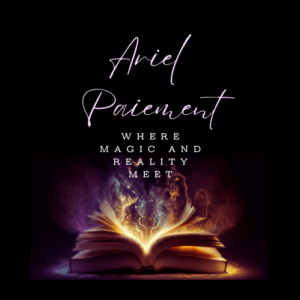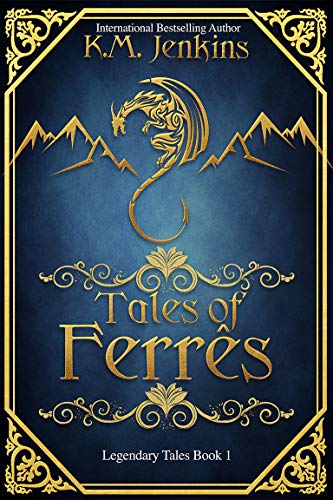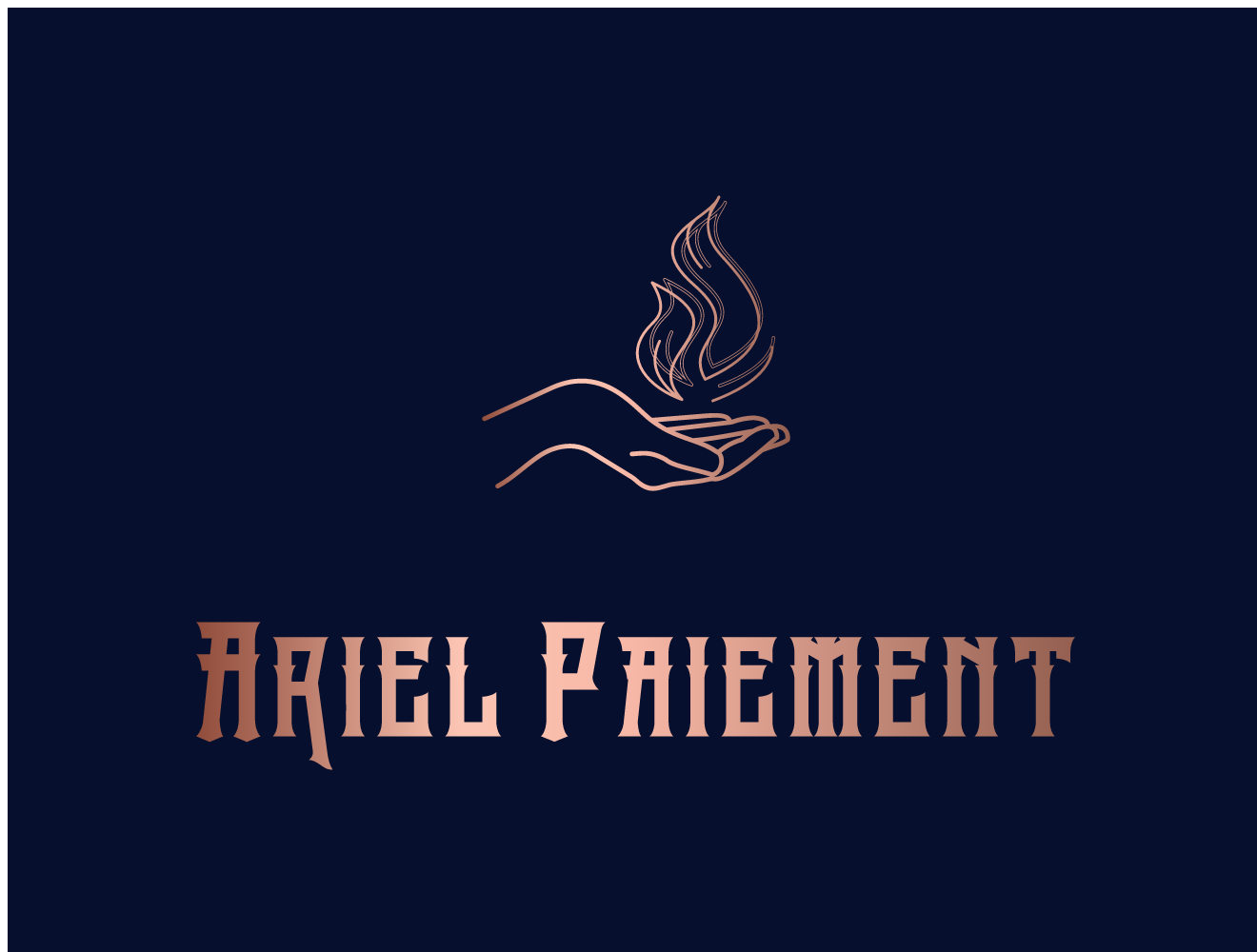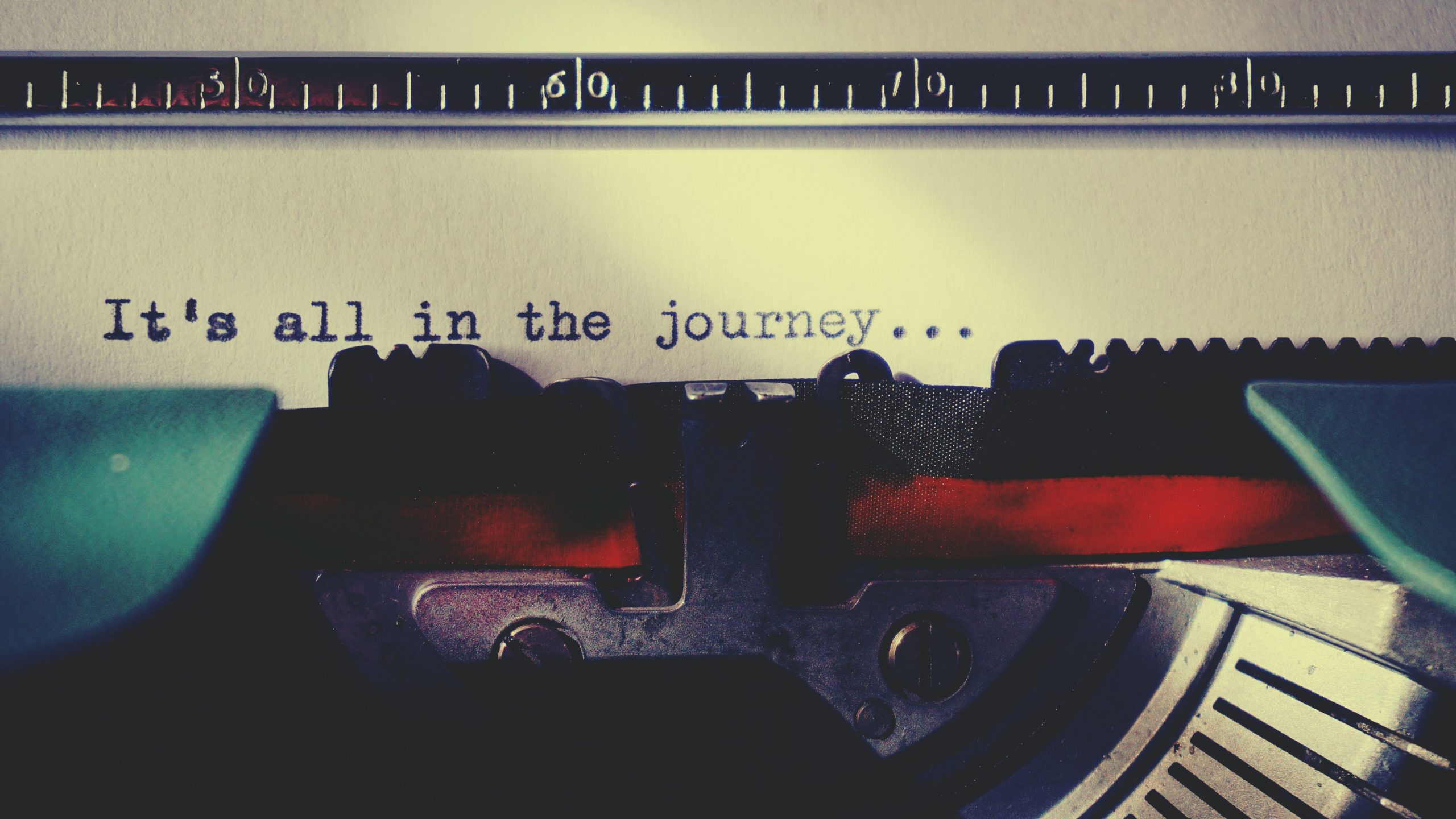Introduction
Last time on this section of the blog, I talked about my best friend, L, and the lessons I’ve learned in my time as his friend. That story and what I learned about myself lead into today’s story well. This story and its lessons, however, are far harder to share. In fact, this might be the hardest post I’ve felt God leading me to write, at least to date. But while it’s hard to think about this chapter in my life, even nearly two years after it all happened, I strongly believe the story could help others like me avoid the heartache I went through. So, I will share it as best I can along with the lessons I learned through it.
My Standpoint and Defining Terms
I’ll start by stating a few things very clearly so no one’s unsure or confused about my standpoint or how I define terms. First, I believe every woman should submit to the man God has placed in authority over her and that she should obey so long as the command given doesn’t go against clear Biblical principles. Fighting words with many, many women, even in Christian circles, which is both saddening and disheartening. But, I believe this is because many of us haven’t been taught a right view of submission, nor have our men, which is why the application of this lesson will be directed both to the women in my audience and to the guys (more as a plea based on issues I’ve observed than anything).
Defining Submission
But onto point two. I believe that submission varies vastly from subjugation. Because of that, we need to define terms here. Submission, as I define it and as I believe the Bible teaches it, is the choice of the individual to obey and place themselves under the care of an authority. It is something that both men and women do every day when they obey the laws, and it is something God commands women to do (Eph. 5:22-23) for their husbands as well as for children to do with their parents in the same chapter (though the word obey is used instead). Like it or not, women, that’s what the Bible says.
But our fundamental churches are teaching an unbalanced message on submission that barely touches on (or entirely ignores) the men’s responsibility in response to the women’s submission. Though no pastor would intend for the results of this unbalanced message to lead to abuse or harm of women, that is very often what occurs. Why? Because the men hearing the message assume that they are not only owed their wives’ submission but also the right to behave however they see fit toward their wives. Why would they assume differently if the focus is entirely on the woman’s responsibility to submit? It seems to the listener that the man has no dictates for how he ought to treat his wife, and this then leads to subjugation. It is an unintentional but very dangerous result of the one-sided, unbalanced teaching on the role of women and the role of men in the home.
Defining Subjugation
So, how do I define subjugation? It is when a woman obeys not by choice but out of fear of retribution and harm if she doesn’t. It is when anyone, really, is no longer making a willing choice to obey (which would be submission) and instead cooperates because the other person is stronger and may inflict emotional, mental, or physical harm if they don’t get their way. Submission ceases to be submission if it is not a willing choice and is instead coerced. At the point that someone must coerce another to obey, they, at the very least, are not on the receiving end of the other individual’s submission.
It is very important that this definition includes the point that the obedience is won through either open or perceived threats of some sort of harm. A person may feel forced to obey or obey grudgingly (neither of which are submission) without being subjugated. So please understand that there is a point where a woman may not be submitting but is also not being subjugated or trampled down by her husband. That middle ground is still an issue, to my mind, but it isn’t an issue on the part of the man, at least. Subjugation is obvious, at least to others, because it robs an individual of freedom of thought, a voice or say in matters, and their choices on a broad scale.
Because of how I define subjugation, I view subjugation as a perversion of submission and something that should in no way be advocated. It is, even if subtle, abusive in my experience. It results in men treating women as though they are inferiors, not equals. While I believe strongly that there is a hierarchy of authority in the home based on the Bible, the Bible is also very clear about how men (both fathers and husbands) ought to treat the women and children in their care. Subjugation doesn’t follow that model at all, and in the case of marriage, it eliminates the aspect of partnership that the Bible promotes. In no way is abuse of a woman justified, nor is it excusable to try to wear her down mentally so that she will both obey without thought of her own and avoid ever voicing her opinion on matters that affect her. A man who wants to hurt the woman he should be caring for or rob her of the God-given ability to think for herself is a man unworthy of any woman whether she’s submitting to him or not.
Reasons for Submission and the Commands Surrounding It
Finally, before we talk about how I learned the difference between these two and what shaped my view of this important subject, I feel we need to discuss the commands the Bible gives to men and women regarding submission and authority in the home in general.
In Ephesians, where it tells women to submit to their husbands, it also tells husbands to love their wives. Some of us may wonder why that is. Let’s start with the husbands and why they need to be told to love their wives.
Why Different Commandments to Different Genders?
Simply put, because women and men are different. Like it or not, we think differently and have different aspects of our nature. In general, for example, women are more nurturing than men. And men, in general, don’t need to be told to take charge. It’s built in to their nature, and the only reason men today don’t do so is because modern feminism has taught them not to be men.
So why tell men to love? The men do not love their wives naturally. Sure, they might have the emotional type of love, but the sacrificial, agape love that Christ has for the church? That’s not something they naturally display, so they must then be told that’s how they should respond to their wives.
Women, generally, have an easier time with loving and nurturing, but they instead have difficulties with a fight between taking charge and knowing their place in the home. So, God wisely tells them, submit. That command helps us as women to understand the structure of authority in the home.
It isn’t saying we’re lesser beings or worth less than the man. It’s saying that the man is the authority in the house, and he must answer to God someday for all he allows and commands within that home. The woman’s place is not to usurp that God-given authority but to submit to it.
The Results?
If both individuals obey the commands given to them, then the woman submits without fear to a man who loves her, cherishes the gift she has given, and will sacrifice to ensure she has what she needs (even if not always what she wants). That is a marriage that can last! The marriage built on these principles is a happy one. The marriage that does not in some way act on these principles is much more tenuous, and in my experience, a much, much less happy one. I’ve seen both, and I can tell you that I don’t want the type of marriage that upends the order God has given to things. It isn’t pretty, and even if it isn’t absolutely awful, it certainly has more problems.
Learning to Differentiate
That last section was on the longer side, but a careful and clear defining of terms is necessary for any discussion that may be doctrinal or controversial in nature. Otherwise, misunderstandings or twisting of words may easily arise. But, moving on from that, let’s talk about how I learned the difference.
Growing up, the churches I was in talked about submission frequently, but their focus was only on the women. They rarely, if ever, spoke to the guys about their responsibility as the leaders in the home receiving the submission of their wives and children. They only mentioned it in any real way on Father’s Day, and once a year hardly teaches our men and boys that the subject matters in any way.
The definition they presented for submission and the way they presented it always made me extremely uncomfortable and frustrated. If their idea of submission was all that was possible, or was what God promoted as good, then why should I want it? It didn’t seem good, and what they taught colored my understanding of God in this area to a less than flattering view. I thought for myself enough to recognize I wanted no part of that, but not enough, yet, to understand why or to search for answers on it. Since my views on the topic were cemented by the time my father got around to really teaching about it, I filtered everything he said through what I already thought. I didn’t understand the differences between what he believed and taught and what our church believed and taught. Not until I was in college.
Changes in Perspective
In college, I might have continued to hate the word and idea of submission as the church used it if not for L. After meeting my best friend, I realized it wasn’t as bad as I thought. At that point, I started looking at the idea of submission more closely as the Bible taught it, not as I was told the Bible did by the church. I was learning to apply my mind to this area too, not just other areas where I already held a different opinion from my church and had Scripture to back it up. I was learning to study and act on Scripture instead of simply reacting to what might or might not be false teaching.
This led to the realization that we actually choose to submit all the time in our lives. We follow laws, and we often abide by unspoken societal rules. We choose to cooperate with government, usually, even when we might not be very happy with what they’ve chosen to do. Children submit when they obey their parents. Wives submit when they let their husband make decisions with a happy and willing spirit, even if the decision is as small as where they’ll go out to eat. In my case, I chose to give my best friend a lot of say in my life on matters big and small. I chose to defer to decisions he made unless doing so violated my moral beliefs. Others protested on occasion that I gave him too much control, but I was happy with the way things were. I didn’t feel as though he took advantage of it at all.
A Much-Needed Relief
In all honesty, L made it easy to leave the decision-making to him on things affecting us both as well as issues affecting only me. I barely even thought about what I was doing until later, most of the time. Granted, we both had lines and standards we felt were important and wouldn’t cross or break. But I don’t remember ever stopping to think, “Well, maybe I don’t want to do what you said to,” when he would tell me to go to bed because I wasn’t making sure I got enough sleep or when he would decide where we were going to eat. Sometimes, I had my own opinion or preference, but it became habit after a while to decide ahead that I’d go with what he wanted unless there was a reason to voice an opposing opinion.
I really appreciated that he took charge, and I found relief in letting someone else make the decisions. For years, I operated under the motto that I could do things myself and didn’t need any guy to do anything for me. I mean, I fussed about my brothers opening doors because I saw it as a commentary on my capability, not as a sign of respect toward me. I finally gave up control, and just as I’d started to feel grounded for once, L had to leave school.
Less than Bright Decision-Making
I’m not proud of what followed next. After L left, I felt lost. I grew accustomed to having someone there who loved me despite my flaws and who used the control I handed over to help me and to support me. I felt freer than I ever had in ages, and naturally, I missed that feeling. Besides that, I still wasn’t good at dealing with my depression alone. While he was there, L helped me tremendously, but I still didn’t fully know how to cope with the bouts I still had yet. So his departure was a huge blow. Going back to being alone and having that constant stress of always taking care of everything and making all the decisions by myself left me tense, lonely, and cut adrift.
So, when C stepped in, more than happy to take control and help, I was all too happy to let him. I met him before L left, and he and L were friends, so we spent a lot of time together. C wasn’t very controlling, at first. He didn’t offer any real structure in my life, but he did listen and encourage me, and he gave gentle nudges toward the right direction. He encouraged me to read my Bible and turn to God for encouragement, and he generally said all the right things.
Taking Things at Face Value
Since I was preoccupied, I took it at face value. I was so desperate to find someone who could help and bring back that sense of completion I’d felt previously that I didn’t notice the earliest warning signs and ignored my gut on the rest. When he pressed for a relationship, I admit I was unsure and scared. Those two words defined everything that was to follow.
Unable to find a logical reason for the bad feeling I had, I chalked it up to silly emotions—as I at the time prized logic over emotion to an unhealthy extreme—and moved ahead. Neither parent liked the relationship, but they wisely realized that I needed to learn my lesson somewhere safe, so my father didn’t stop me. The school rules protected me mostly in the physical arena, so they let the two of us proceed and prayed it wouldn’t end too miserably.
A Cruel Reality
Sadly, things went wrong faster than anyone expected, and it was worse than anticipated. C changed his tune as soon as we talked about dating, but it really changed when we were dating. He didn’t take no for an answer (unless there was just no way I would budge and he couldn’t get away with ignoring my wishes due to school policies), and he made every effort to assure me that being uncertain was no reason not to move forward or to cooperate. He guilt-tripped me from the start of the relationship by accusing me of stringing him along when I expressed doubts about moving forward so quickly. I was with him for a semester, and I saw firsthand what the difference was between submission and subjugation.
What I Expected From Prior Situations
My relationship with C was a nightmare and not at all what I’d hoped for. I guess in some ways, I was expecting him to respect me like L had. I trusted L implicitly. We had our issues, but I usually felt safe, loved, grounded, and sure of where we stood. At our worst, I sometimes felt unloved or unsure, but that was it. He genuinely apologized when he realized he had caused hurt or negative feelings. In turn, I quickly forgave wrongs or hurts because I knew he loved me, even if things in life sometimes caused him to treat me in a less than kind manner.
Best of all, I knew where I stood with him. If I stepped over a line, L made it clear in no uncertain terms, and he told me what he would do if I did it again. But I always had a choice, and he never tried to push me into one or the other. He never threatened to cut off contact or shut me out if I didn’t do what he preferred with an issue. Instead, he just did what he could to mitigate the issue. He was there not for himself, but because he cared. He gave me his full support if I wanted to work on an issue he gently pointed out, and he made sure the relationship had a balance of give and take. I did my best to offer him the same: unconditional love, respect, and support no matter what.
What I Got With C
But with C, I was never able to fully trust him. I lied to myself and said I did, but looking back, I never did. I was constantly unsure where he and I stood. Consequences for stepping over lines were never clear. In fact, I rarely knew where the lines were until I crossed them, and then C would make me feel awful for even a small offense. I couldn’t ask questions about anything he felt we’d discussed enough, and I never knew when that might be because it changed for every topic. Talking to anyone but him about my doubts was the only consistently punished offense as it earned me accusations of distrust and censure for not believing him.
I gave him my respect, my heart, and what trust I could manage. He returned the gift I gave with disrespect, broken boundaries, and broken trust until it all fell apart. I should’ve left sooner than I did, I know. But even when he pushed me physically, emotionally, and mentally, I held on.
Making Excuses
I wanted to believe in him, and I wasn’t able to come to terms with the changes in him. Frankly, I didn’t understand how he’d changed so much. I didn’t really think I could change him, mind you, but I kept hoping that if I waited it out, he’d go back to normal. I kept chalking the poor treatment—and the fights that erupted when I tried to say no or give an opinion—up to stress. He was just too tired or too worn out because of school, I told myself. Maybe this. Maybe that.
Finally, I faced the truth. He hadn’t changed. The person he let me see for the time before we started dating had been a lie. A lie that he wholeheartedly believed, I think, due to the very real psychological issues he had, but a lie, nonetheless.
Consequences of a Bad Choice
He and I split at the end of the spring semester right before finals and just a few days before I turned twenty. My father asked him to leave me be until school ended for the summer. I needed to focus on school and was in no state to explain why I was ending it immediately. Frankly, I was a wreck. I barely managed to study for finals. Since we were both working on campus for the summer, I figured I could talk to him once I was done with finals so we could part ways amicably.
But he refused to leave me alone. He called my friends and brother (who was on campus with us) constantly because I wouldn’t answer, showed up at places he knew I usually went (to the point that I quit going to my usual spots unless I had to), and gave me a week or two tops to come to terms with things. He didn’t allow me to grieve or try to put the pieces back together, and he refused me the relief escaping him brought.
A Living Nightmare
During the summer, my brother ran interference wherever he could. But that just made C angry and put my brother (and anyone who helped me or cared enough to support me) on the receiving end of his anger. Eventually, he began avoiding me like the plague. However, he still antagonized my brother, and at times, I was terrified he’d hurt the people I cared about. He treated anyone who supported me with accusations of distrust, and even his own brother, who had initially tried to continue including me in breakfasts Sunday, dealt with C’s anger. I lived my entire senior year in fear that I’d somehow set him off again and restart the whole waking nightmare. I was thrilled about graduation because it meant going home, far out of his reach.
Friends and teachers started to notice that I withdrew from people, and I spent more and more time in my room to avoid any chance of running into him. But even with that, I couldn’t avoid running into C sometimes. Having classes on the same floor as he did made that impossible. We weren’t allowed in the hallways outside classrooms until five minutes before class, and so the open seating arenas on each floor were the only options for students to sit down or congregate. Those days, my teachers would ask if I was okay when I came into class. Even though he never spoke to me and usually avoided eye contact, just seeing him was enough to leave me trembling for the first five to ten minutes of class.
At the End of the Day…
My situation was far worse than most regular breakups are. However, when you make bad decisions, even just one, and you involve yourself with someone like C, this is the kind of thing it leads to. My story is tame in comparison to what some women have gone through at the hands of guys like this. (I refuse to call them men because a real man knows how to treat a woman with love and respect.)
The Moral of the Story
This has been quite a long post, but I hope you’ll bear with me just a little longer. Let me level with the guys here first. I’m not going to tell you what you should or shouldn’t do because it’s not my place. But I’ll do my best to give a bit of perspective on this while highlighting what the Bible has to say about the issue. What you choose to do with it is your decision.
To the Guys:
Here’s the thing. I’ll be the last woman you will ever hear advocating that the women should be in charge instead of the men. That’s not Biblical, and frankly, we’ve seen just how well that’s worked so far. It hasn’t… While every marriage is unique in how the couple handles submission, just as the people involved in that marriage are unique, Scripture is clear on one thing. Women should submit to their husbands. Even if you aren’t a good husband or authority figure. That doesn’t mean you can take advantage of it, though.
If you’re lucky enough to have a woman who genuinely wants you to lead and wants to submit to you, cherish that! Especially if she’s under no obligation to submit to you yet. The world is, at best, unable to understand their need or desire to submit to you and leave themselves in your care, and at worst ridicules them for a good desire. So, it takes a lot of strength to be honest with herself, let alone with you, about that need. Please don’t make her regret being transparent with you on this. You have a very special woman. Both she and her willingness to submit and heart to serve are a gift, whether you recognize it or not.
In the end, no fellow human being can tell you what to do with that gift. Only God and His Word can do that. But I can tell you the consequences if you don’t. If you are one of those guys who don’t or won’t treasure it, she will walk away when she’s able. And if she’s not strong enough to do it alone? Others will be happy to help her to do so. When she does leave, some other man will treat her like the treasure she is. He will pick up the broken pieces you created. He will be glad to show her that she is a treasure, even if it takes time because of the damage you’ve done.
To the Girls:
Ladies, if you grew up in a fundamental church, you’ve been hearing all about how women should submit to men. If you didn’t grow up in a fundamental church, you’ve probably been hearing the opposite. “Women shouldn’t have to submit to a man. We’re strong, independent women, so they have no right to tell us what to do.” Sound familiar? Regardless of what you grew up with, you’ve probably heard the world’s idea of a strong, independent woman both extolled and ridiculed.
I’ll be honest. I can’t stand today’s idea of a strong, independent woman as it’s presented. That said, some women buy into this but in practical life are actually very feminine, kind women. Their personalities aren’t the Type-A sort. So while they may agree with the idea, they’re not exactly the poster child for it either. All of us are different, and we all fit in differently. But I still really hate the ideal that’s presented to our girls and young women today.
Why I Can’t Stand It
The strongest of today’s feminists would tell you that being a strong, independent woman means you don’t submit to a man. Doing so is weak and is, in fact, allowing yourself to be subjugated. Instead, you must get a job and support yourself. And you find a man who will be somewhere in the range of total pushover and caring a little. Heaven forbid you marry a man who wants to be in charge of any areas of your life. Okay, I’m being a bit sarcastic. I don’t have any problem with women working or having a degree of independence. However, I have a big problem with what they have to say about submission. I also take issue with the fact that many mistake equality for having no difference at all in roles.
The Desire to Submit is Not a Bad Thing
Girls and young ladies out there, wanting to submit is not a bad thing! It’s actually a good and natural desire. Don’t let the rest of the world tell you otherwise. They’re wrong. I’m not saying there’s anything wrong with being independent or strong. But their definition of a woman who is those things? It’s not the only one, and I would propose that it isn’t even the right one. A woman who submits even when she isn’t happy about a decision is much stronger than one who rebels. Trust me. I know. I’ve done things both ways. Submission is a choice that, though sometimes hard, is a lot more fulfilling than rebellion.
The Desire to Submit Can Be Used Against You
But also know this. Your desire to submit can be used against you just as it was with me. Please, oh please, be careful who you give that kind of power to! Never give it to anyone who wants to take it without permission or right to it. If you get involved with a man like that—especially if you marry him—submission becomes much harder. It’s easy to shift into subjugation before you know what has happened. And once you’re involved, the road back to freedom and yourself is much, much harder. Wait for someone who will give as much as they’re taking. Wait for a man who recognizes your value and honors you for it. Men like that do exist. They’re not all bad. If you don’t wait for that man, you’ll do a lot of damage to yourself before you meet him. And it’ll be damage you can’t undo.
Conclusion
My greatest regret to this point is what happened with C. I lost a piece of me, and I’m never going to be the same. God’s grace brought me, step-by-step, to a place where I don’t look at every guy with suspicion. But unfortunately, what C did to me, what I allowed to happen, is not something I can get rid of. It changed me as a person. I learned a valuable lesson, but I can only look back on my choices with regret. My choice affected how I look at the world. It affected my ability to look at the guys around me the same way. Even if I get to a point where that’s no longer a problem, it’s still going to color my perspective. And so, it’s likely that things will be harder for the right one when he shows up.
Ladies, please don’t fall into that same trap. Learn from my mistakes. Don’t let guys with ill-intent turn your submission into a weapon to be used against you. Your submission is a gift you choose to give, so choose wisely. The choice you make will impact you for the rest of your life.








